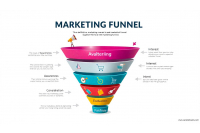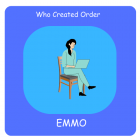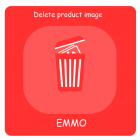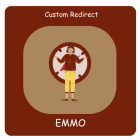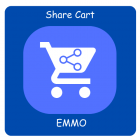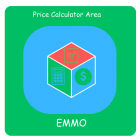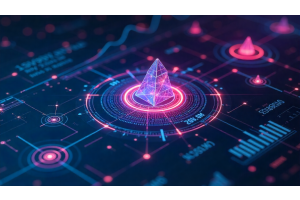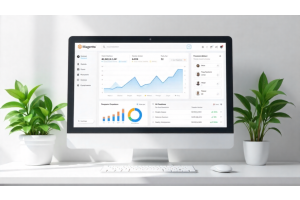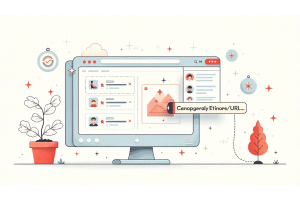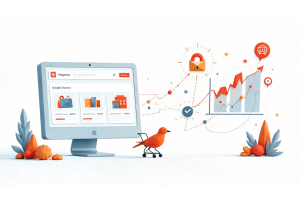Understanding the Marketing Funnel: Its Definition and Functionality
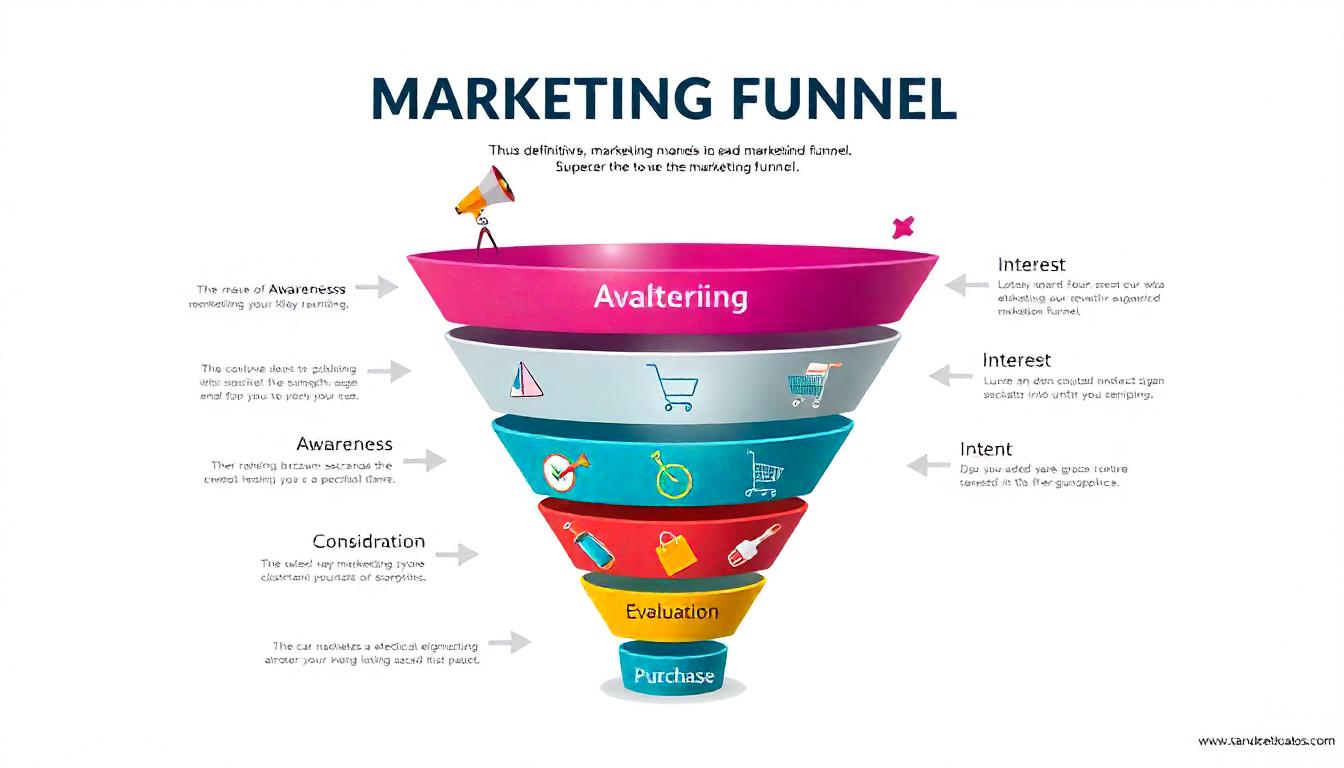
Understanding the Marketing Funnel: Its Definition and Functionality
Table of Contents
- What Is a Marketing Funnel?
- The Stages of the Marketing Funnel Explained
- Importance of the Marketing Funnel in Business
- How the Marketing Funnel Guides Customer Journey
- Top-of-Funnel (TOFU) Strategies for Awareness
- Middle-of-Funnel (MOFU) Techniques for Engagement
- Bottom-of-Funnel (BOFU) Approaches for Conversion
- Measuring Success at Each Stage of the Funnel
- Common Metrics to Track in the Marketing Funnel
- Creating Effective Content for Each Funnel Stage
- How to Optimize Your Marketing Funnel
- The Role of Marketing Automation in the Funnel
What Is a Marketing Funnel?
The marketing funnel is a strategic model that illustrates the process customers go through when interacting with a brand or product, from initial awareness to the final purchase. It's often represented as an inverted pyramid, with a broad top that narrows down to a point, symbolizing the decreasing number of potential customers as they progress through the various stages.
The funnel typically comprises three main sections:
Top of Funnel (TOFU): The initial phase where potential customers become aware of your brand.
Middle of Funnel (MOFU): The stage where interested prospects evaluate their options.
Bottom of Funnel (BOFU): The final phase leading to a purchase decision.
Understanding this model allows marketers to create tailored strategies that resonate with customers at each stage, ultimately increasing conversion rates and improving customer retention.
The Stages of the Marketing Funnel Explained
The marketing funnel is usually segmented into several distinct stages, each representing a crucial part of the customer journey:
Awareness: At the top of the funnel, customers are introduced to your brand through various channels like social media, online ads, and content marketing. The goal is to attract a wide audience and generate interest.
Interest: Here, prospects start to show interest in your products or services. They may visit your website, read your blog posts, or follow your social media accounts to learn more..
Consideration: In this stage, potential customers actively evaluate your offerings against competitors. They might read reviews, compare prices, and seek out detailed information about your products.
Intent: Customers indicate their intent to purchase by taking specific actions, such as adding items to their shopping cart or signing up for a newsletter.
Evaluation: At this point, customers weigh their options carefully, considering all information available. They may reach out for more details or ask for a demo.
Purchase: The final stage, where a customer makes a decision and completes the purchase. This is the ultimate goal of the marketing funnel.
Tip
If you offer your SEO texts in several languages or localize them for different regions, your pages may be incorrectly classified as duplicate content. However, there is a simple solution to this in the form of hreflang. Our article explains what you need to bear in mind when using hreflang.
Read more about hreflangImportance of the Marketing Funnel in Business
The marketing funnel is essential for several reasons:
Customer Insight: It provides valuable insights into customer behavior, allowing businesses to understand where potential customers are dropping off and which stages require more attention.
Targeted Marketing Strategies: By segmenting the funnel into stages, marketers can develop targeted strategies that address specific customer needs at each phase.
Resource Allocation: The funnel helps businesses allocate their marketing resources more effectively, focusing efforts on the most impactful strategies at each stage.
Improved Conversion Rates: By understanding the customer journey, businesses can optimize their processes to enhance conversion rates and increase sales.
How the Marketing Funnel Guides Customer Journey
The marketing funnel acts as a roadmap for the customer journey, allowing marketers to visualize how customers move through each stage. By understanding this journey, businesses can:
Develop Tailored Content: Create content that addresses the unique needs and concerns of customers at each stage, helping to nurture leads effectively.
Implement Engagement Strategies: Use various engagement strategies, such as email marketing, social media interactions, and personalized offers, to keep customers moving toward a purchase.
Analyze Customer Behavior: Track and analyze customer behavior throughout the funnel, identifying bottlenecks and opportunities for improvement.
Top-of-Funnel (TOFU) Strategies for Awareness
Top-of-Funnel strategies focus on attracting a broad audience to generate awareness of your brand. Effective tactics include:
Content Marketing: Producing high-quality blog posts, infographics, videos, and podcasts that provide value and establish authority in your niche. This content should be informative, entertaining, and shareable to increase reach.
Social Media Marketing: Leveraging social media platforms such as Facebook, Instagram, and LinkedIn to engage with a wider audience. Regular posting, engaging with followers, and running paid ads can help boost visibility.
Search Engine Optimization (SEO): Optimizing your website and content for search engines to improve visibility and attract organic traffic. This includes using relevant keywords, creating quality backlinks, and ensuring a user-friendly website design.
Paid Advertising: Running pay-per-click (PPC) campaigns on platforms like Google Ads and social media to quickly capture attention and drive traffic to your website.
Pricing Comparison: BigCommerce vs. Magento 2
BigCommerce operates on a subscription model with tiered pricing based on the features and revenue thresholds of your store. This includes costs for hosting, security, and customer support, which can be beneficial for startups looking to manage their budget effectively. Pricing tiers start with a basic plan suitable for smaller businesses and increase as you scale.
Magento 2, as an open-source solution, is free to download and use, but this comes with hidden costs. Businesses must invest in hosting, security measures, and potentially significant development resources to customize and maintain their stores. This can lead to higher overall costs, particularly for startups that might not yet have a steady revenue stream.
Middle-of-Funnel (MOFU) Techniques for Engagement
Middle-of-Funnel strategies aim to engage potential customers who have shown interest in your offerings. Techniques include:
Email Marketing: Implementing targeted email campaigns that provide personalized content, product recommendations, and valuable resources. Use segmentation to tailor messages based on customer interests.
Webinars and Workshops: Hosting informative sessions that educate prospects about your products and address their pain points. This helps establish trust and authority while engaging potential customers.
Case Studies and Testimonials: Sharing real-life success stories from existing customers to build credibility and trust. Highlight the benefits of your products and how they solved specific problems.
Lead Magnets: Offering valuable resources such as eBooks, checklists, or free trials in exchange for contact information. This helps build your email list and nurture leads effectively.
Support and Community Resources: A Closer Look
BigCommerce offers comprehensive 24/7 customer support via phone, live chat, and email, which can be invaluable for startups needing quick assistance. Additionally, it features a detailed knowledge base, community forums, and a variety of resources to help users troubleshoot common issues.
In contrast, Magento 2 relies heavily on its community for support. While there are many forums and resources available, businesses often find that technical issues require hiring external developers for assistance. This reliance on third-party support can lead to slower response times and potentially higher costs.
Bottom-of-Funnel (BOFU) Approaches for Conversion
Bottom-of-Funnel strategies focus on converting interested leads into paying customers. Effective approaches include:
Product Demos and Free Trials: Allowing prospects to experience your product firsthand, demonstrating its value and ease of use. This can significantly influence their purchasing decision.
Promotions and Discounts: Offering limited-time deals, discounts, or exclusive offers to create urgency and encourage immediate purchases.
Personalized Consultations: Engaging with prospects one-on-one to understand their specific needs and address any concerns they may have. Personalized service can help close deals effectively.
Clear Calls to Action (CTAs): Using strong, clear CTAs throughout your website and marketing materials to guide users toward the final purchase. Make it easy for them to take action.
Measuring Success at Each Stage of the Funnel
To optimize marketing strategies, it's essential to measure success at each funnel stage. Key performance indicators (KPIs) include:
Awareness Stage: Metrics such as website traffic, social media reach, and overall impressions can provide insights into how effectively you're generating awareness.
Interest Stage: Analyze click-through rates (CTR) and engagement metrics (likes, shares, comments) to evaluate how well your content resonates with potential customers.
Consideration Stage: Track email open rates and time spent on product pages to understand how engaged prospects are with your offerings.
Conversion Stage: Measure sales conversion rates, average order value, and customer acquisition cost (CAC) to assess the effectiveness of your marketing strategies.
Common Metrics to Track in the Marketing Funnel
Monitoring specific metrics helps assess funnel performance and identify areas for improvement:
Lead Conversion Rate: The percentage of leads that convert into customers. A higher rate indicates effective nurturing strategies.
Customer Lifetime Value (CLV): The total revenue generated from a customer over their entire relationship with your brand. Understanding CLV helps businesses focus on customer retention strategies.
Churn Rate: The percentage of customers lost over a specific period. A high churn rate may indicate issues with customer satisfaction or product quality.
Return on Investment (ROI): Measurement of the profitability of marketing efforts. Tracking ROI helps businesses assess the effectiveness of their campaigns and allocate resources accordingly.
Creating Effective Content for Each Funnel Stage
Content is a critical component of guiding customers through the marketing funnel. Here are some tips for creating effective content:
TOFU Content: Focus on educational and entertaining content that attracts attention and raises awareness. Consider blog posts, infographics, and videos that answer common questions in your niche.
MOFU Content: Provide detailed insights and comparisons that help customers evaluate your offerings. This can include whitepapers, case studies, and webinars that address specific pain points.
BOFU Content: Highlight product benefits, share success stories, and provide compelling calls to action. Create product landing pages that clearly outline features, pricing, and testimonials to encourage purchases.
How to Optimize Your Marketing Funnel
Optimizing your marketing funnel involves continuous analysis and improvement. Strategies include:
A/B Testing: Experiment with different strategies, messaging, and designs to determine what resonates best with your audience. Regular testing helps refine your approach and increase effectiveness.
Analyzing Customer Feedback: Collect feedback from customers through surveys, reviews, and direct conversations. Use this information to identify areas for improvement in your products and marketing strategies.
Utilizing Marketing Automation Tools: Implement marketing automation tools to streamline processes, nurture leads, and personalize communication based on user behavior.
The Role of Marketing Automation in the Funnel
Marketing automation tools help streamline and enhance the marketing funnel by automating repetitive tasks, allowing marketers to focus on strategy and analysis. They enable:
Personalized Communication: Sending targeted messages based on customer behavior and preferences, increasing engagement and conversion rates.
Lead Scoring: Identifying high-quality leads for focused engagement, helping sales teams prioritize their efforts.
Data Analysis: Providing insights into customer interactions and funnel performance, enabling data-driven decision-making.
| Understanding the Marketing Funnel: Key Points | |
|---|---|
| Definition of the Marketing Funnel | Overview of what a marketing funnel is and its importance in business. |
| Stages of the Funnel | Explanation of the awareness, consideration, and conversion stages. |
| Strategies for Each Stage | Key strategies for attracting, engaging, and converting leads. |
| Measuring Funnel Success | Key performance indicators and metrics to track funnel effectiveness. |
| Optimizing Your Funnel | Tips for continuous improvement of the marketing funnel process. |
| How to Optimize Your Marketing Funnel | Provides strategies for continuous improvement of the marketing funnel based on analysis and testing. |
| The Role of Marketing Automation in the Funnel | Discusses how marketing automation tools enhance the efficiency and effectiveness of the funnel. |
| Aligning Sales and Marketing Through the Funnel | Explains the importance of collaboration between sales and marketing teams for funnel success. |
| Challenges in Implementing a Marketing Funnel | Identifies common obstacles businesses may face when establishing an effective marketing funnel. |
| Future Trends in Marketing Funnels | Highlights emerging trends and innovations that may shape the future of marketing funnels. |
FAQs
What Is a Marketing Funnel?
The marketing funnel is a strategic model that illustrates the process customers go through when interacting with a brand or product, from initial awareness to the final purchase. It's often represented as an inverted pyramid, with a broad top that narrows down to a point, symbolizing the decreasing number of potential customers as they progress through various stages.
The funnel typically comprises three main sections:
- Top of Funnel (TOFU): The initial phase where potential customers become aware of your brand.
- Middle of Funnel (MOFU): The stage where interested prospects evaluate their options.
- Bottom of Funnel (BOFU): The final phase leading to a purchase decision.
What Are the Stages of the Marketing Funnel?
The marketing funnel is segmented into several distinct stages:
- Awareness: Customers are introduced to your brand through various channels like social media and online ads.
- Interest: Prospects show interest by visiting your website or reading your content.
- Consideration: Customers evaluate your offerings against competitors.
- Intent: Indications of intent to purchase, such as adding items to a shopping cart.
- Evaluation: Customers weigh their options, considering all available information.
- Purchase: The final stage where a customer makes a decision and completes the purchase.
Why Is the Marketing Funnel Important for Businesses?
The marketing funnel is essential for several reasons:
- Customer Insight: It provides valuable insights into customer behavior, highlighting where potential customers drop off.
- Targeted Marketing Strategies: Allows marketers to develop strategies that address specific customer needs at each phase.
- Resource Allocation: Helps businesses focus marketing resources on the most impactful strategies.
- Improved Conversion Rates: Understanding the customer journey helps optimize processes for better conversion rates.
How Does the Marketing Funnel Guide the Customer Journey?
The marketing funnel acts as a roadmap, allowing marketers to visualize how customers move through each stage. It helps businesses:
- Develop Tailored Content: Create content that addresses unique customer needs at each stage.
- Implement Engagement Strategies: Use various strategies to keep customers moving toward a purchase.
- Analyze Customer Behavior: Track and analyze behavior to identify bottlenecks and improvement opportunities.
What Are Top-of-Funnel (TOFU) Strategies for Awareness?
Effective TOFU strategies include:
- Content Marketing: Producing informative and shareable content to attract a wide audience.
- Social Media Marketing: Engaging with a wider audience through regular posts and ads.
- Search Engine Optimization (SEO): Optimizing website content for better visibility.
- Paid Advertising: Running PPC campaigns to quickly capture attention.
What Are Bottom-of-Funnel (BOFU) Approaches for Conversion?
Effective BOFU strategies focus on converting leads into customers, including:
- Product Demos and Free Trials: Allowing prospects to experience your product firsthand.
- Promotions and Discounts: Creating urgency with limited-time offers.
- Personalized Consultations: Engaging one-on-one to address specific needs.
- Clear Calls to Action (CTAs): Guiding users toward final purchases with strong CTAs.
How Can Businesses Measure Success at Each Stage of the Funnel?
Key performance indicators (KPIs) to measure success include:
- Awareness Stage: Metrics like website traffic and social media reach.
- Interest Stage: Click-through rates and engagement metrics.
- Consideration Stage: Email open rates and time spent on product pages.
- Conversion Stage: Sales conversion rates and customer acquisition cost (CAC).
How to Optimize Your Marketing Funnel?
Strategies for optimizing your funnel include:
- A/B Testing: Experimenting with different strategies and designs.
- Analyzing Customer Feedback: Collecting feedback to identify areas for improvement.
- Utilizing Marketing Automation Tools: Streamlining processes and personalizing communication.
